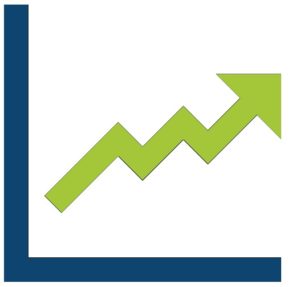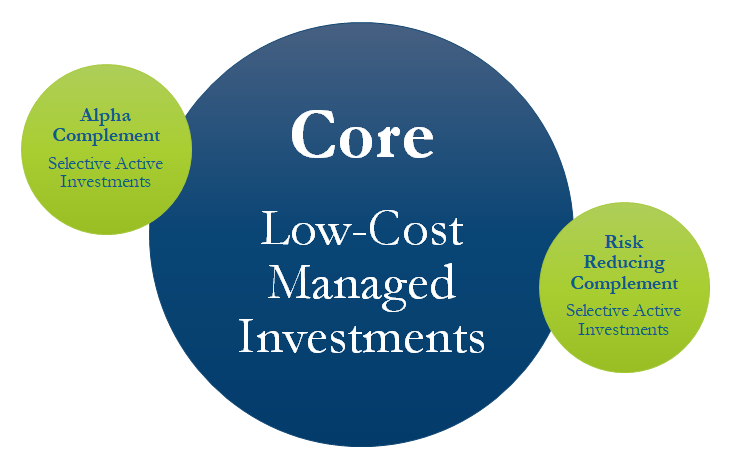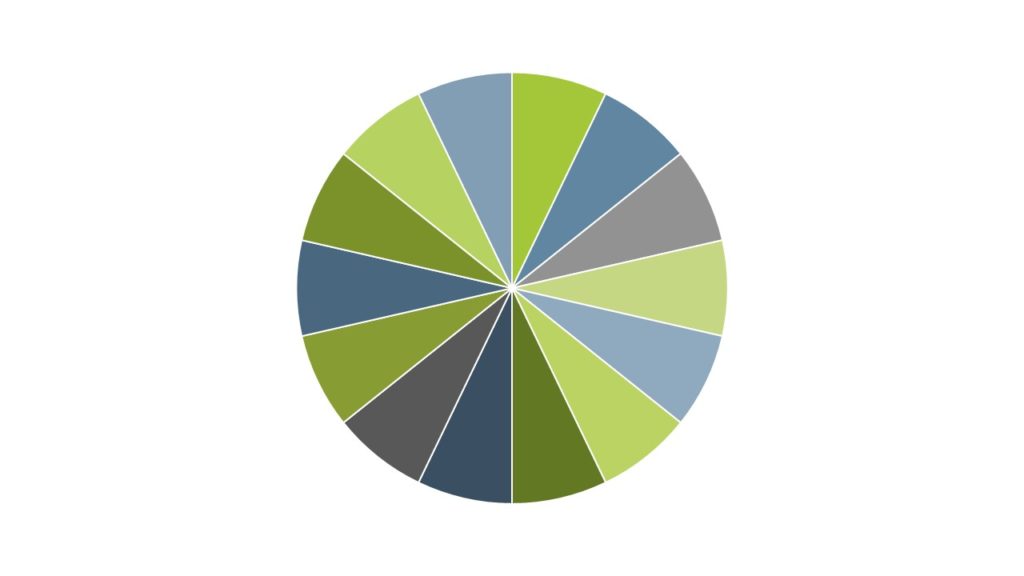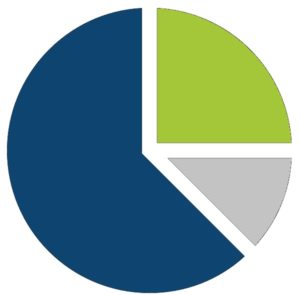Starts with a Conversation

We begin our wealth management process by having several conversations with you with the objective of understanding your goals–both long-term and short-term. We also discover your investment history and your expectations. We want to get a clear picture of your liquidity needs (money needed in the short run), your tax situation, your time horizon, and other factors.
Determine Your Goals

Once we’ve gathered some initial facts, we begin to understand your goals and start to discern what kinds of returns may be needed to give you a chance at achieving your goals. The required rate of return is the rate of return before factoring inflation that an investor needs in order to make an investment worthwhile.
Measure Your Risk Tolerance

The next step is to determine your risk tolerance. We use state-of-the-art technology to determine a quantitative number that visually demonstrates your risk tolerance. Keep in mind that risk tolerance includes both: 1) Willingness to accept risk, and 2) Ability to accept risk. We tend to be conservative and lean toward using the lower of the two.
Investor Profile

No two people are identical. We want to know your investment background, your investment experience, and how you accumulate or have accumulated your wealth. All of this information is vital to provide tailor-made advice and recommendations.
Balancing Returns and Risk

If you focus solely on returns, you will be disappointed during different time periods. We don’t look at performance returns as the sole-metric for how we evaluate investments or your portfolio. We want a proper balance that looks not only at returns but also the risk that you were willing to accept to meet your goals.
Set Market Expectations

In order to create a proper portfolio, we have to start with a proper framework. Our proprietary framework is built on an independent view of the leading world-class global economists. These economists cannot predict the future with absolute certainty, but we believe that blending their multiple viewpoints is wise. Once we have an understanding of where we may be in the business and credit cycle, as well as “expected returns” of the various asset classes, we may decide to make changes to our portfolios.
Core-Complement

After we have gathered all the information we need to create your portfolio, we determine which portfolio is best for you and your situation. We use a core-complement approach. This means that a bulk of your portfolio is placed into inexpensive managed investments that capture the various markets around the world. This is not a set-it-and-forget-it approach, because based on our independent economic outlook, we may shift the allocations within the “core” piece. The complement funds are investments we think may add alpha and reduce risk to the overall portfolio.
Global Asset Allocation

Investments are becoming more global every day due to technology and global trade, and we believe that investing focused solely on the United States is both naive and potentially harmful to your long-term goals. There are times when various continents, regions, and countries can come in and out of favor, and placing bets on any one country increases country risk.
Diversification

Diversification is the process of spreading your risk over multiple investments. Intelligent Investing believes in diversifying across asset classes (equities, fixed income, alternatives), countries, market capitalization, sectors, passive vs. active, and multiple managers. One thing that sets us apart is a focus on diversifying risk factors. Individuals often have more risk in their portfolios than they suspect. Understanding various risk factors and how they affect the other investments in the portfolio is key. One of the ways to spread your risk is to pay close attention to the correlations amongst asset classes. Correlation means how likely is one investment going to react to another investment.
Constant Monitoring

Intelligent Investing constantly monitors your portfolios through state-of-the-art technology. We receive alerts when portfolios are outside of tolerance bands that we have professionally created, and think this blending of technology with a human touch is an example of what makes us unique.
Automatic Rebalancing

Rebalancing is the process of selling an asset class that has done well recently and buying more of an asset class that has not done well recently with the goal of decreasing the portfolio’s overall risk. Intelligent Investing uses sophisticated technology that automatically suggests rebalancing based on pre-determined tolerance bands. These tolerance bands are based on a number of factors (e.g. asset class volatility and transaction costs). We pay close attention to transaction costs because too much rebalancing can hurt the portfolio. Our rebalancing also has built-in tax sensitivity information and tax-loss harvesting recommendations.
Revisit Goals and Risk Tolerance

We know that your goals and situations will change as you go through life. When a major life change occurs (employment, marital, college, etc…), we may revisit your wealth plan and perhaps revisit your wealth portfolio to make our best effort at helping you achieve your long-term goals with acceptable risk along the way.
Summary
Wealth Management must begin with a framework. Benjamin Graham, the Father of Security Analysis, pushed his colleagues to recognize that analyzing and evaluating securities should be regarded as a structured process patterned after the scientific method. He also stood stubbornly for the principle that financial analysis must always conform to the highest standards of ethical conduct. Two decades after pushing for a formal framework, what is now known as the CFA Institute issued the first Chartered Financial Analyst designation in 1963. Since then, 120,000 CFA Charters have been awarded. CFA Institute has more than 135,000 members in 150 countries and territories, and 137 member societies in 60 countries. To learn more about the CFA® charter, click here.

The CFA Institute has a Candidate Body of Knowledge that we strive to incorporate into our wealth management.